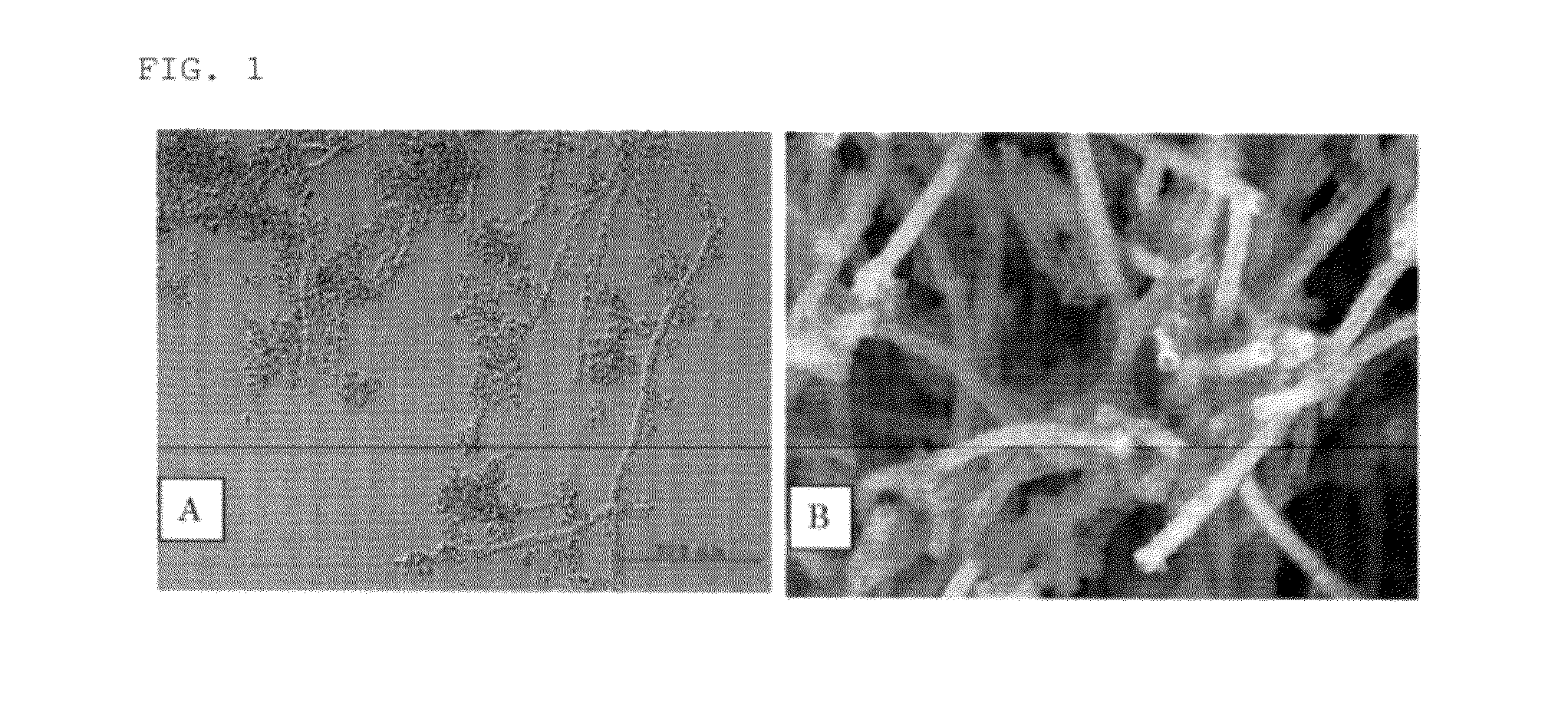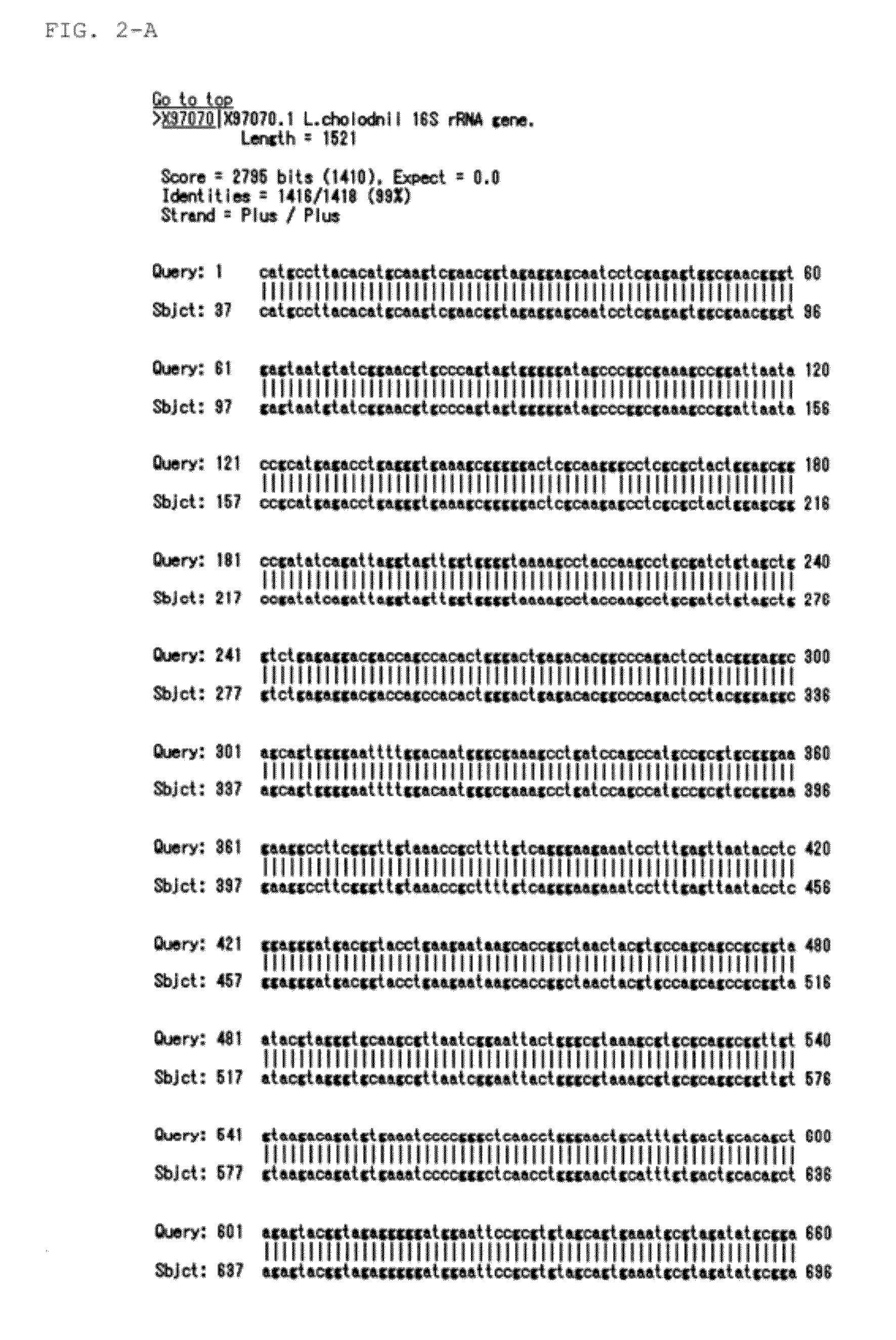Novel microorganism capable of producing oxide
a microorganism and oxide technology, applied in the field of microorganisms, can solve the problems of low sheath-producing capability, insufficiently able to maintain a sheath-producing capability, and do not disclose, and achieve the effect of stable yield of metal oxide and easy preservation/maintenance and control of culturing
- Summary
- Abstract
- Description
- Claims
- Application Information
AI Technical Summary
Benefits of technology
Problems solved by technology
Method used
Image
Examples
example 1
1. Isolation of Microorganism of the Present Invention
[0100](1) Isolation of OUMS1 Strain from Water Purification Plant in Joyo City, Kyoto
[0101]Water was collected from groundwater sediment contained in an iron bacteria tank in the Joyo City Cultural Center in Joyo City, Kyoto, and placed in a container. A small amount thereof (e.g., 0.5 to 1 g) was introduced into a GP liquid medium (containing 0.076 g of disodium hydrogenphosphate dodecahydrate, 0.02 g of potassium dihydrogenphosphate dihydrate, 2.383 g of HEPES, and 0.01 mM of iron sulfate, per liter of sterile groundwater, whose pH was adjusted to 7.0 with an aqueous sodium hydroxide solution) containing an iron fragment (purity: 99.9%, about 5 mm square), and sufficiently suspended. Thereafter, the resulting product was cultured at 20° C. for 10 days in a shaking incubator (70 rpm). A portion of the sediment that increased during the culture was collected, transferred to a flask containing a fresh GP liquid medium containing a...
example 2
1. Optimal Culture Condition for Promoting Proliferation of OUMS1 Strain and Facilitating Formation of Sheath-Shaped Lepidocrocite Oxide
[0121]Using the OUMS1 isolated in Example 1, lepidocrocite was prepared under the following culture conditions.
[0122]OUMS1 strain was introduced into an SIGP liquid medium (containing 1 g of glucose, 1 g of peptone, 0.2 g of sodium metasilicate nonahydrate, 0.044 g of calcium chloride dihydrate, 0.041 g of magnesium sulfate heptahydrate, 0.076 g of disodium hydrogenphosphate dodecahydrate, 0.02 g of potassium dihydrogenphosphate dihydrate, 2.383 g of HEPES, and 0.05 mM of iron sulfate, per liter of sterile distilled water, whose pH was adjusted to 7.0 with an aqueous sodium hydroxide solution) containing three pieces of iron fragments (purity: 99.9%, about 1 cm square), and sufficiently suspended. Thereafter, the resulting product was cultured at 20° C. for 14 days in a shaking incubator (70 rpm). After the completion of the culture, the surfaces of...
PUM
| Property | Measurement | Unit |
|---|---|---|
| particle diameter | aaaaa | aaaaa |
| particle diameter | aaaaa | aaaaa |
| width | aaaaa | aaaaa |
Abstract
Description
Claims
Application Information
 Login to View More
Login to View More - R&D
- Intellectual Property
- Life Sciences
- Materials
- Tech Scout
- Unparalleled Data Quality
- Higher Quality Content
- 60% Fewer Hallucinations
Browse by: Latest US Patents, China's latest patents, Technical Efficacy Thesaurus, Application Domain, Technology Topic, Popular Technical Reports.
© 2025 PatSnap. All rights reserved.Legal|Privacy policy|Modern Slavery Act Transparency Statement|Sitemap|About US| Contact US: help@patsnap.com



